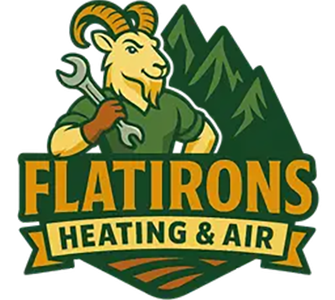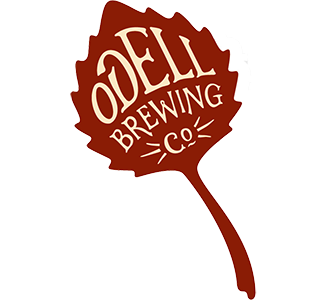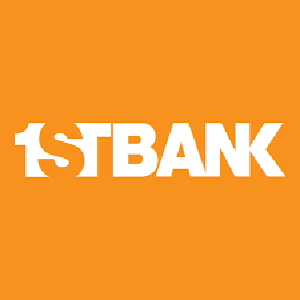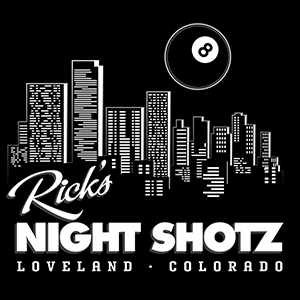Thank you to our Sponsors!








Programs & Services
Bene Hub – Benefits Assistance Program
Are you eligible for programs designed to support individuals with limited incomes and disabilities?
Disabled Resource Services now operates as a Benefits Enrollment Center (BEC), providing benefits for low-income Medicare beneficiaries as well as seniors and young adults with disabilities.
The Benefits Enrollment Center can assist individuals by taking advantage of online resources as well as assisting those in person with a wide variety of benefits including Medicare Part D Extra Help and Savings Programs, Medicaid, SNAP and LEAP.
To find out about these benefits, please read more about them below:
Benefits
Medicare Part D Extra Help/Low-Income Subsidy
WHAT’S EXTRA HELP?
“Extra Help” is a Medicare program to help people with limited income and resources pay Medicare drug coverage (Part D) premiums, deductibles, coinsurance, and other costs.
You also won’t have to pay a Part D late enrollment penalty while you get Extra Help.
Some people qualify for Extra Help automatically, and other people have to apply.
WHO GETS EXTRA HELP AUTOMATICALLY?
You’ll get Extra Help automatically if you get:
- Full Medicaid coverage
- Help from your state paying your Part B premiums (from a Medicare Savings Program)
- Supplemental Security Income (SSI) benefits from Social Security
You’ll get a letter about your Extra Help. It tells you things like how much you’ll pay, and your new Medicare drug plan, if you don’t have one already.
If you don’t automatically get Extra Help, you can apply for it:
WHO SHOULD APPLYL FOR EXTRA HELP?
In most cases, to qualify for Extra Help, you must have income and resources below a certain limit. These limits may go up each year.
Income and resource limits in 2024:
| Your situation: | Income limit: | Resource limit: |
|---|---|---|
| Individual | $22,590 | $17,220 |
| Married couple | $30,660 | $34,360 |
For more information please visit the Medicare website
Medicare Savings Programs
Get help from your state paying your Medicare Part A (Hospital Insurance) and Part B (Medical Insurance) premiums through a Medicare Savings Program. If you qualify, Medicare Savings Programs might also pay your Part A and Part B deductibles, coinsurance, and copayments.
You’ll apply for Medicare Savings Programs through your state. When you apply, your state determines which program(s) you qualify for. Even if you don’t think you qualify, you should still apply.
HOW TO QUALIFY FOR THE 4 MEDICARE SAVINGS PROGRAMS
In many cases, to qualify for a Medicare Savings Program, you must have income and resources below a certain limit, as described below. These limits go up each year.
You may still qualify for these programs in your state even if your income or resources are higher than the federal limits listed. Some states don’t count certain types or specific amounts of income or resources when deciding who qualifies.
1. QUALIFIED MEDICARE BENEFICIARY (QMB) PROGRAM
Helps pay for: Part A premiums; Part B premiums, deductibles, coinsurance, and copayments (for services and items Medicare covers).
Monthly income and resource limits for 2024:
| Your situation: | Monthly income limit:* | Resource limit: |
|---|---|---|
| Individual | $1,275 | $9,430 |
| Married couple | $1,724 | $14,130 |
If you qualify for the QMB program:
- Medicare providers aren’t allowed to bill you for services and items Medicare covers, including deductibles, coinsurance, and copayments.
- You may get a bill for a small Medicaid copayment, if one applies.
- You’ll also get Extra Help paying for your prescription drugs. You’ll pay no more than $11.20 in 2024 for each drug covered by your Medicare drug plan.
Show both your Medicare card and Medicaid card (or QMB card) each time you get care. If you have Original Medicare, you can also show one of your claims statements, called Medicare Summary Notices. These statements show you’re in the QMB program.
2. SPECIFIED LOW-INCOME MEDICARE BENEFICIARY (SLMB) PROGRAM
Helps pay for: Part B premiums (You must have both Part A and Part B to qualify.)
Monthly income and resource limits for 2024:
| Your situation: | Monthly income limit:* | Resource limit: |
|---|---|---|
| Individual | $1,526 | $9,430 |
| Married couple | $2,064 | $14,130 |
If you qualify for the SLMB Program:
- You’ll also get Extra Help paying for your prescription drugs.
- You’ll pay no more than $11.20 in 2024 for each drug your Medicare drug plan covers.
3. QUALIFYING INDIVIDUAL (QI) PROGRAM
Helps pay for: Part B premiums (You must have both Part A and Part B to qualify.)
Monthly income and resource limits for 2024:
| Your situation: | Monthly income limit:* | Resource limit: |
|---|---|---|
| Individual | $1,715 | $9,430 |
| Married couple | $2,320 | $14,130 |
If you qualify for the QI program:
- You must apply every year to stay in the QI Program.
- States approve applications on a first-come, first-served basis – priority is given to people who got QI benefits the previous year.
- You’ll also get Extra Help paying for your prescription drugs. You’ll pay no more than $11.20 in 2024 for each drug your Medicare drug plan covers
If you qualify for Medicaid, you can’t get help from the QI program, but you may qualify for help from another Medicare Savings Program.
4. QUALIFIED DISABLED & WORKING INDIVIDUAL (QDWI) PROGRAM
You may qualify for the QDWI Program if you:
- Have a disability
- Are working
- Lost Your Social Security disability benefits and Medicare premium-free Part A because you returned to work
Helps pay for: Part A premiums only
Monthly income and resource limits for 2024:
| Your situation: | Monthly income limit:* | Resource limit: |
|---|---|---|
| Individual | $5,105 | $4,000 |
| Married couple | $6,899 | $6,000 |
For more information, visit the Medicare website.
Medicaid (Health First Colorado)
Health First Colorado is Colorado’s Medicaid Program, providing health care coverage to the public. This public health insurance is available to those who qualify.
If qualified, you will be able to access 3 kinds of basic benefits:
1. Physical health benefits
2. Dental benefits
3. Behavioral health (mental health and substance use benefits)
Some benefits may require a co-pay. A co-pay is a fixed amount for a covered service, paid by a patient to the provider.
BENEFITS
HEALTH CARE PROVIDER VISITS
- Primary Care Medical Provider Visit
- Specialist Visits
- Home Health
- Telemedicine
- Vision Care
DENTAL SERVICES
- Cleanings
- Fillings
- Root Canals
- Crowns
- Partial Dentures
HOSPITALIZATION, EMERGENCY SERVICES, TRANSPORTATION AND OTHER SERVICES
- Emergency Room
- Ambulance Services
- Non-Emergent Medical Transportation
- Urgent care centers/facilities
- Outpatient surgery at an Ambulatory Surgery Center
- Outpatient Hospital Services
- Inpatient Medical/Surgical Care
- Organ and Transplants
- Anesthesia
- Breast reconstruction
- Hospice
- Private Duty Nursing
- Radiation therapy and Chemotherapy services
MATERNITY AND NEWBORN CARE
- Prenatal and postpartum care
- Delivery and inpatient maternity services
- Newborn child coverage
- Breast Pumps
- Specialty Programs – Nurse Home Visitor Program, Prenatal Plus, Special Connections
MENTAL HEALTH, SUBSTANCE USE DISORDER, OR BEHAVIORAL HEALTH SERVICES
- Alcohol and/or drug assessment
- Physical assessment of detoxification progression including vital signs monitoring
- Behavioral health counseling and therapy, individual
- Alcohol and/or drug services – Group counseling by a clinician, Targeted case management
- Safety assessment including suicide ideation and other behavioral issues
- Level of motivation assessment for treatment evaluation
- Drug screening and monitoring
- Medication-assisted treatment
- Inpatient Hospital
- Outpatient Psychotherapy
- Group Psychotherapy
- Family Psychotherapy
- Mental Health Assessment
- Pharmacologic Management
- Outpatient Day Treatment, non-residential
- Emergency/Crisis Services
- Clinic Services, Case Management
- Biologically-based mental illnesses and disorders
- Mental Health and Substance Use Disorder – Outpatient hospital and physician, Inpatient hospital
- Substance Use Disorder – Residential Treatment, Withdrawal Management
- School-based mental health services
PHARMACY AND DURABLE MEDICAL EQUIPMENT BENEFITS
- Prescription Drugs
- Durable Medical Equipment
PHYSICAL, OCCUPATIONAL OR SPEECH THERAPY
- Home Health Therapies (Physical therapy/ Occupational therapy/ Speech therapy) – Acute, Long Term
- Outpatient Speech Therapy
- Inpatient Speech Therapy
- Outpatient Physical therapy/ Occupational therapy
- Inpatient Physical therapy/ Occupational therapy
LABORATORY SERVICES
- Lab and Radiology
PREVENTIVE AND WELLNESS SERVICES
- Preventive and wellness services and chronic disease management
- Immunizations
- Colorectal cancer screening
- Screening mammography
- Audiology
- Allergy testing and injections
- Screening Pap tests
- Gynecological exam
- Prostate cancer screening
- Routine foot care
FAMILY PLANNING SERVICES
- Office Visits and Counseling
- Surgical Sterilization
- Contraceptives
- Long Acting Reversible Contraceptives (LARCs)
- Emergency Contraceptives
- Fertility Assessments
ELIGIBILITY
You may qualify for Health First Colorado if you meet the income guidelines:
Approximate Monthly Income To Qualify for Health First Colorado
| Family Size | Adults 19-65 | Children 0-18 | Pregnant Women |
| Family of 1 | up to $1,616 | up to $1,725 | up to $2,369 |
| Family of 2 | up to $2,186 | up to $2,334 | up to $3,205 |
| Family of 3 | up to $2,755 | up to $2,942 | up to $4,040 |
| Family of 4 | up to $3,325 | up to $3,550 | up to $4,875 |
| You may still qualify if you make more. Apply for more details. | |||
WHAT YOU NEED TO APPLY
- Social security numbers for applicants who have them
- Immigration document numbers for non-citizens
- The name, address, contact info, and birth date for applicants
- Employer and income information for everyone in your household. Examples include pay stubs or W2 forms.
- Other income information including Social Security Administration (SSA) or Supplemental Security Income (SSI) payments and mentions
- Information and policy numbers for health insurance plans covering members of your household, including Medicare
SNAP (formerly known as food stamps)
The Supplemental Nutrition Assistance Program (SNAP) helps low-income households in Colorado purchase food. It provides a monthly benefit that helps families and individuals buy the food they need for good health.
The benefit is provided based on income, resources and the number of individuals in the household. Electronic Benefit Transfer (EBT) cards are used to receive the benefit and can be used similar to debit cards at participating food stores. The benefit can be doubled in value by shopping at participating markets and food stores that support the Double Up Food Bucks program.
SNAP is part of a federal nutrition program to help low-income households purchase food. County human services departments are responsible for determining eligibility and authorizing SNAP.
ELIGIBILITY
Those who qualify for SNAP include persons who may meet one of the following options:
- Work for low wages
- Are unemployed or work part-time
- Receive TANF, SSI or other assistance payments
- Are elderly or disabled and live on a small income
- Are children
- Adults ages 18 to 52 who have no children in their home (known as ABAWDs, able-bodied adults without dependents)
Individuals, couples and families may qualify if their income is less than 200% of the Federal Poverty Level (FPL). See the table below for gross monthly income limits, based on household size. Note: The values below have been updated to reflect SNAP increases on Oct. 1, 2023.
| Household size | Gross monthly income limits |
|---|---|
| 1 | $2,430 |
| 2 | $3,288 |
| 3 | $4,054 |
| 4 | $5,000 |
| 5 | $5,858 |
| 6 | $6,714 |
| 7 | $7,570 |
| 8 | $8,428 |
| Each additional member (add) | +$858 |
TO APPLY:
DOCUMENTS NEEDED TO APPLY
Proof of income
- 30 days of earned income (pay stubs, employer statement that includes pay per hour and hours per week, etc.)
- Self-employment bookkeeping records (if self-employed)
- Agency letter showing unearned income (Social Security Retirement or Disability income, Supplemental Security Income (SSI), Veterans Affairs (VA) pension or disability benefits, Unemployment, child support, alimony, private retirement, pension, etc.)
Proof of identity (any of the items below)
- Driver’s license or state-issued identification card
- Birth certificate or Social Security card
- Work or school identification card
- Voter registration card
Proof of medical expenses (ONLY if over 60 or disabled)
- Billing statements or repayment agreements
- Medicare card, indicating Part B
- Mileage or transportation costs to/from medical appointments
- Itemized receipts for medical expenses (prescription drugs, medical supplies, etc.)
Other possible documents
- Immigration or naturalization papers (ONLY if these documents apply to you. For example, NOT required if you are only applying for your children who were born in the United States)
- Child care expenses (if appropriate)
WHAT HAPPENS AFTER I APPLY?
Once you have submitted an application for SNAP benefits:
- In most cases, the county human services office has 30 days to determine your eligibility.
- If you have less than $100 in cash and less than $150 in monthly earnings, or if your housing expenses exceed your monthly income or if you are a migrant or seasonal farm worker, you may be eligible for expedited SNAP benefits within 7 days.
You may need an interview over the phone. If you prefer, you can request an interview in person.
If an interview is needed, the county human services office may:
- If you included a phone number on your application, a worker may attempt to call you at the phone number you provided when your application is received.
- If the worker cannot reach you when attempting to call, you will receive a notice of the date and time of a scheduled interview.
- Follow the instructions on the interview notice for how to:
- Attend your interview at the scheduled date and time
- Reschedule your interview if the scheduled date and time is not convenient for you
You may need to provide documents verifying your situation and you can provide them in the following ways:
- Upload them to your PEAK account on colorado.gov/PEAK
- Upload them to your MyCOBenefits application on your mobile device
- Provide them to your county human services office location
- Mail them to the mailing address on your county’s letterhead or website
You will be provided an EBT card by mail or in-person so you can access your SNAP benefits.
For more information, please visit the SNAP website
LEAP
ABOUT LEAP
The Colorado Low-income Energy Assistance Program (LEAP) is a federally funded program that helps eligible hard-working Colorado families, seniors and individuals pay a portion of their winter home heating costs. Its goal is to help bring warmth, comfort and safety to your home and family by assisting with heating costs.
The LEAP program works to keep our communities warm during the winter (November through April) by providing assistance with heating costs, equipment repair and/or replacement of inoperable heating tools. While the program is not intended to pay the entire cost of home heating, we aim to help alleviate some of the burdens that come with Colorado’s colder months.
In most cases, the energy assistance benefit is paid directly to the household energy supplier. In most cases, if you are approved for LEAP, payments are made directly to your primary heating fuel vendor and a notice will be sent to you informing you of the benefit amount. Other benefits provided by LEAP include repair or replacement of a home’s primary heating system, such as a furnace or wood-burning stove. The program does not provide financial assistance for any type of temporary or portable heating.
ELIGIBILITY
You may qualify for LEAP benefits if you:
- Pay home heating costs, either directly to a utility company or to a landlord as part of rent.
- Earn a maximum family household income that does not exceed 60% of the state median income level.
- Provide proof of lawful presence in the U.S., for you and household members born outside of the U.S. Valid forms of identification include:
- Naturalization Certificate, or
- Born Abroad Certificate, or
- U.S. Passport
- Permanent Resident Card, or
- Documentation of Refugee or Asylee status
Use the table below to determine your monthly gross income according to your household size. Household refers to all people living with you and for whom you are financially responsible. The table below will displays updated income guidelines for the 2023-2024 season that begins November 1, 2023 and ends April 30, 2024.
|
Household Size |
Maximum Gross Monthly Income |
| 1 | $3,081 |
| 2 | $4,030 |
| 3 | $4,978 |
| 4 | $5,926 |
| 5 | $6,875 |
| 6 | $7,823 |
| 7 | $8,001 |
| 8 | $8,179 |
| Each Additional Person | $177 |
HOW TO APPLY
To apply for LEAP, you can submit an application several ways starting Nov 1st through April 30th:
LEAP English Application and Information Sheet
LEAP Spanish Application and Information Sheet
For more information please visit the LEAP website
Ones Helped
Programs
DRS Staff
Years Est.
Get In Touch
Disabled Resource Services
Location
1647 E 18th St, Loveland, CO 80538
Monday - Thursday: 8:30 am - 4:30 pm
Closed Daily: 12:00 pm - 1:00 pm

